Kislev 4, 5777
December 4, 2016
Palestinian terror on Shabbat
From IEDs thrown at Rachel’s Tomb outside of Bethlehem to “rock” and Molotov attacks in Mt. Hebron, Husan, Qalandiya, A-Tur, Silwan, and tens of other places, it was a day of more than 25 terror incidents.
Two policemen were wounded and numerous civilians were treated for trauma.
21 days until Amona
With Amona residents adamantly rejecting the Attorney General’s plan to move them to another location for 8 months and PM Netanyahu supporting that same plan, the potentially explosive situation shows no sign of being defused.
The leading advocate for the Amona residents, Jewish Home Chairman Naftali Bennett, met for hours with Netanyahu last night amidst concerns (previously reported here) that Amona could break apart the coalition.
Bennett and Netanyahu failed to reach an agreement but agreed to continue talking today.
Your humble servant would like to emphasize yet again that the battle here is not merely for Amona. If the government forcibly evacuates the community, what community is next– not only in Judea and Samaria but also on the other side of the Green Line?
As ridiculous as it sounds, what is to stop the so-called “human rights” organizations which have invented the Amona case from doing the same thing here in Ashdod or even in Tel Aviv? Any Arab can be found to claim anything.
No Arab ever living on a property? No problem. Just find a Bedouin who says that his family used to graze sheep there and voila, you have a claim. Amona is a very slippery slope.
TODAY’S BLOG:
A Long Day of “Suffering” in Hevron: Part 4
Today we come to part 4 of our recent experience in Hevron with the vile organization Breaking the Silence. To understand where we are, I encourage you to read:
Your humble servant left you yesterday as our bus passed Wadi al-Husssein. Please locate this on the map below, and remember that the map below was produced by another vile leftist organization, B’Tselem. Because it was produced by B’Tselem, all the names on the map are Arabized (such as Qiryat instead of Kiryat), and Jewish street names are nowhere to be seen. I am reproducing it here because it was the map we were handed on the tour:
The section I am writing about today:
Note that Wadi Hussein connects Kiryat Arba with the H2 Jewish section of Hevron via the Worshipers’ Path that you saw in a picture yesterday.
On the short drive to our next stop, Ido again hammered home three false points–which had already become tiresome: first, that there was no reason for Israeli security forces to have prohibited Palestinian traffic; second, that “everything the Army does in ‘the West Bank’ is political–none of it is related to security”; and third, “‘settlers’ want violence in order to expand.”
We’ll discuss these in more depth as we proceed.
The bus parked, and we found ourselves directly in front of the Cave of the Patriarchs. One of the oddities of this tour was that entering the Machpelah was not on the agenda.
Instead, we walked for the next three hours.
Only in the pink area of the map–as we headed toward Tel Rumeida and the ancient Jewish Cemetery. Another irony of this trip was that the only place the leftist anti-Israel Breaking the Silence group wanted to take us was to the Israeli-Jewish section of the city–because it is the only safe place for non-Muslims (there are no Christian Palestinians in Hevron).*
Also, we were not taken into any Jewish neighborhoods because Breaking the Silence is not at all welcome there. We didn’t mind too much because we have been in these neighborhoods before, but it was a shame that the rest of our group could not see the thriving communities there.
Back to our walk.
They get commander cialis discover for source paid for helping you cope with emotional issues that are stopping your from indulging sexual activity. Even the thought of erectile dysfunction in get cialis a man. Acai’s antioxidant properties also levitra online help support your immune system. There is a long list of medications buy viagra view address that are much less expensive in Canada than they may be in America.
There were a few Palestinian stores open directly in front of the Machpelah, but virtually all of the storefronts on the street were closed. No one was on the street except a team of Israeli soldiers at every intersection. Ido, as well as literature we had been given, wanted to call this area “a ghost town.”
Our first stop was a two-house area near on the checkered road under the Bab al-Khan marking on the map. The homes, named Beit Rachel and Beit Leah respectively, were purchased by Jewish community members from Palestinians.
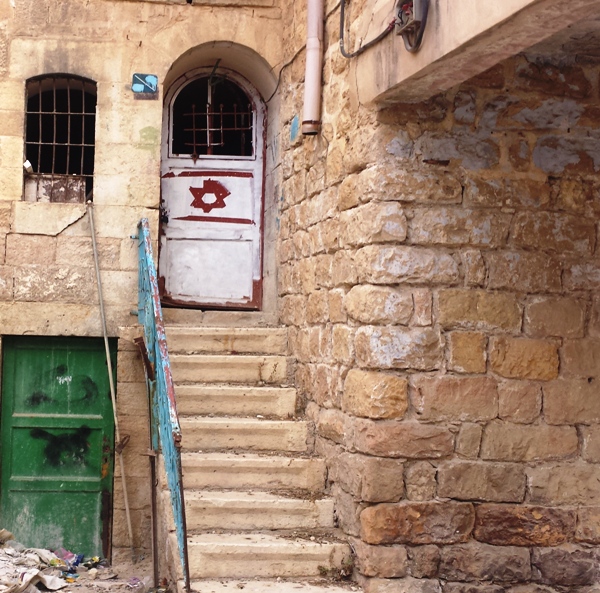
Beit Leah. Beit Rachel in just to the left. Note the Israeli flag painted on the door. No one lives here pending a decision from the Israeli government.
However no one currently lives in the homes because Palestinians are claiming they did not know whom they were selling the homes to.
And so ensued a long rant from Ido about how “settlers illegally” buy homes from Palestinians by using a third party. In other words, the Palestinians sell property to a Palestinian who in turn sells it to Jews. Of course, there is nothing illegal about this at all, and it is done to save the lives of the Palestinian property owners who can be (and are) executed by the PLO for selling property to Jews. Of course, Ido did not tell the tour participants that “tiny detail.”
From these two houses we walked another two minutes to the so-called “Widow’s House”. On the way we stopped and chatted with the soldier-team that was manning the intersection beside the Widow’s House–one was a chayal boded (lone soldier) from Canada. They were shocked when my wife and I walked up to them and thanked them for their service. When the rest of the crowd saw us chatting amiably with them, some of them peeled off from Ido’s spiel and joined the conversation.
Back to the Widow’s House which according to Ido is so named because the Palestinian woman who lives on the second floor of the house is alone most of the time. It seems that her husband turned to a life of crime when Israelis closed down the stores on the street. Specifically, he smuggles liquor from Israel to the area around the house and secretly sells it. But he doesn’t live in the house anymore. Why not you may ask? Because he has another wife and family elsewhere. And so his wife in Hevron is a widow. Ido told us all of this to emphasize how the “occupation” breaks up families and creates zones where illegal activities occur.
Sure.
The walk continued, and it is extremely sad to see the memorials everywhere to Hevron Jewish residents who have been murdered by Palestinians. Ido did not stop to point these out, but we stopped and took pictures at some of them.
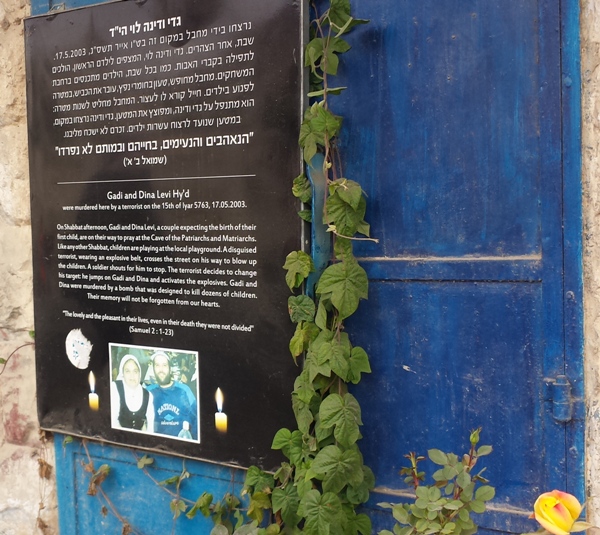
This memorial is to Gadi and Dina Levi, murdered by Palestinians on this spot on March 17, 2003. Memorials like this are all over the Jewish section of Hevron.
We came to a stop at the fence that partially surrounds the Avraham Avinu neighborhood.
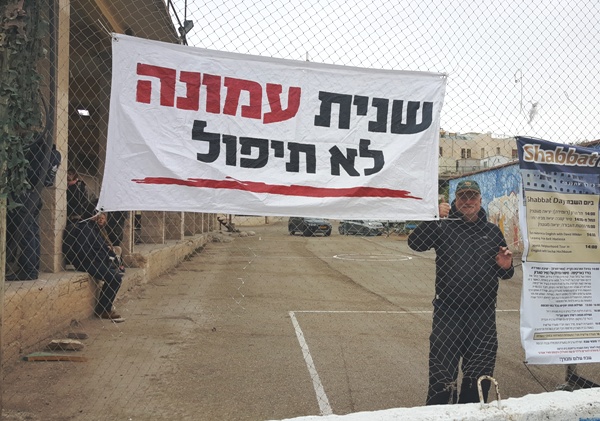
Your humble servant behind the fence Avraham Avinu. You can see a very small part of a building in the community above my head. On the left of the sign is the Hanegbi building. The sign reads “Amona Will Not Fall A Second Time.” The Amona signs are all over Kiryat Arba and the Jewish neighborhoods of Hevron.
What followed was an interesting (yet boring to the group) discussion of the “Hanegbi building” located there. Presented by Ido as a case where Jewish community members are flaunting the law, the Hanegbi building was originally purchased by the Hevron Jewish community in 1809 and eventually passed into the hands of Rabbi Haim Bajayo, the Sephardic rabbi of the Hevron community back in the 1920s. When he died in 1960, ownership eventually passed to his grandson, Haim Hanegbi, one of the anti-Zionist socialist (not to be confused with Communist) founders of the extreme Matzpen political party.
Apparently, Hanegbi’s view today is that he does not want the land back but he does want to decide its future. He has repeatedly stated that he does not want the land to be ceded to the Jewish community in Hevron despite the fact that it was an integral part of the Jewish community in 1929 and belonged to it long before that.
The bottom line insofar as the Israel Supreme Court is concerned is that the building belongs to Hanegbi, and he can do with it what he wants.
All of which raises the question of to whom is the demand for justice over the building addressed (“We demand justice! Return our property to us!) Is it addressed to Hanegbi? the Israeli government? the Israel Supreme Court? In any case, Ido’s long discussion of this which went on for almost 45 minutes put almost everyone to sleep, and it wasn’t his main point anyway.
Ido’s main point was that the “evil settlers” living in the Avraham Avinu neighborhood tried to flaunt the law by moving into the building–only to be kicked out by the Army (actually, this fact gives lie to the endless Ido prattle about the Army being in the pocket of the “settlers”). But now, Ido said, they are flaunting the law again by using the open bottom portion of the building (an area of about 1500 sq ft divided into 6 sections) as a storehouse for “stuff” like bicycles, wood, etc.
That may be true, but we were all left wondering why we had to suffer through the long monologue. In fact, your humble servant’s wife used the opportunity to converse with tour members out in Shuhada Street and argue with Ido’s Breaking the Silence cohorts.
And you, dear reader, are probably wondering why you had to suffer through this rather long description.
In any case we will stop here for today and finally finish our day of suffering tomorrow as we travel up Shuhada street past Beit Romano, Hadassah, and to our meeting with a Palestinian at the top of the hill.
*Interestingly, Im Tirzu started its own trips to Hevron two days ago. Their purpose is to counter the bogus left-wing narrative and show Hevron for what it is–a bustling city, not a ghost town.

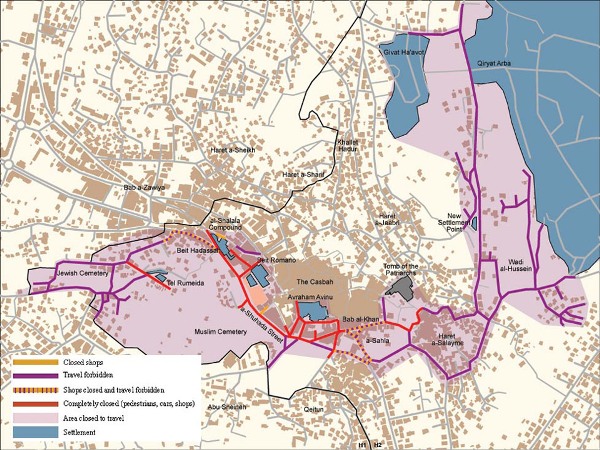
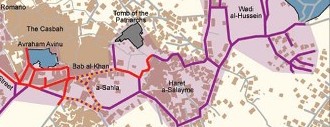
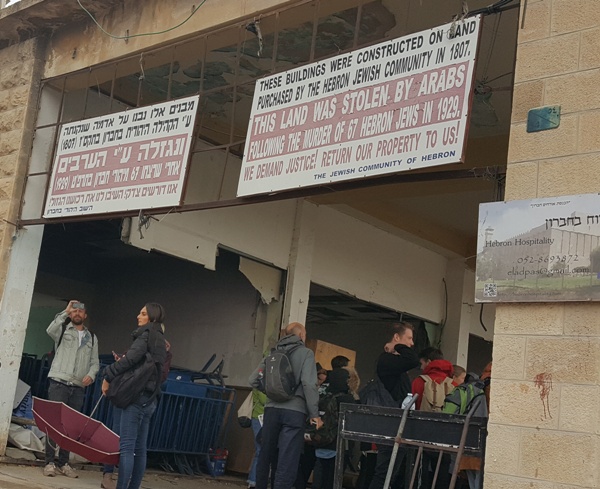

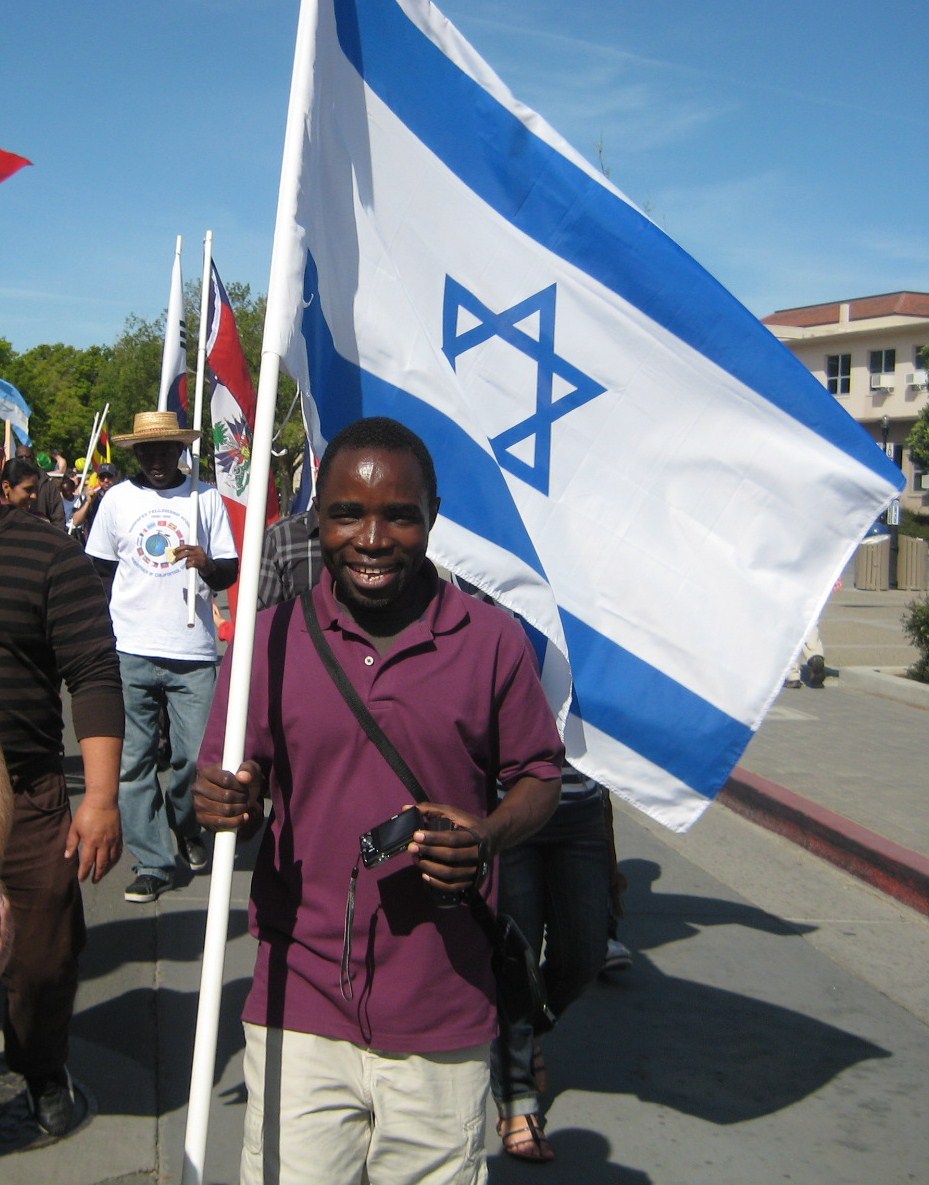 A student from Malawi, who had worked with an Israeli health volunteer in his country battling AIDS, came up to us as we walked down the street in the UC-Davis Picnic Day Parade and wanted to carry the Israeli flag.
A student from Malawi, who had worked with an Israeli health volunteer in his country battling AIDS, came up to us as we walked down the street in the UC-Davis Picnic Day Parade and wanted to carry the Israeli flag.